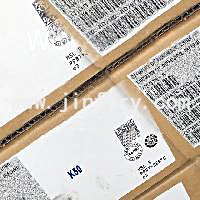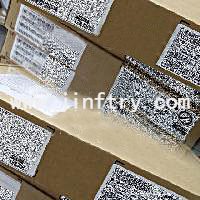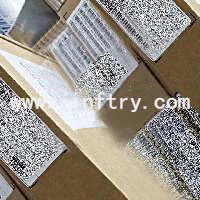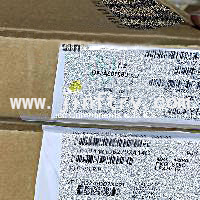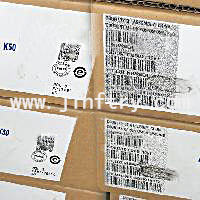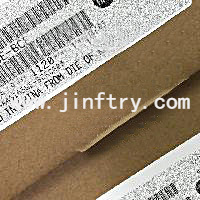What is a shunt? How does it work?

What is a shunt?
A shunt is an instrument used to measure DC current, which is made based on the principle that when DC current passes through a resistor, a voltage is generated at both ends of the resistor.
Shunts are generally used to extend the current range with a fixed low resistance. It is usually connected in parallel with the moving coil of an ammeter or galvanometer. There are two types of connections: inside and outside the meter.

How does a shunt work?
The basic principle of operation of a shunt is to selectively filter certain frequency components in the input signal, or by adjusting the phase difference of the signal so that the input signal can be divided into multiple output signals.
Based on Ohm's law, which is the relationship between voltage, current, and resistance. When DC current passes through the shunt, a voltage drop is created across the shunt. This voltage drop is directly proportional to the magnitude of the current and inversely proportional to the resistance of the shunt. By measuring the voltage drop of the shunt, the current value in the circuit can be calculated.
The shunt is usually connected in parallel with the moving coil of the ammeter or galvanometer, so that the resistance value of the shunt in the circuit will make the current shunt, so that the corresponding current signal can be obtained on the ammeter or galvanometer. The smaller the resistance value of the shunt, the greater the current passing through it, thus enabling the measurement of large currents.

The shunt is actually a resistor with a very small resistance value, when there is a DC current passing through, a voltage drop is generated, which is displayed by the DC ammeter.
The DC ammeter is actually a voltmeter, with a full value of 75mV;DC ammeters and shunts are used together;
For example, the shunt resistance value of the 100A ammeter is 0.00075 ohms;
That is, 100A*0.00075 ohms = 75mV;
The shunt resistance of the 50A ammeter is 0.0015 ohms;
50A*0.0015 ohms = 75mV.
Classification and specifications of shunts
Shunts for DC current measurement are available in both slotted and non-slotted versions. The shunt has manganese-nickel-copper alloy resistance rods and copper strips, and is plated with a nickel layer. It is rated for 60 mV but can also be used for 75, 100, 120, 150 and 300 mV.Slot shunts are available in the following current ratings: 5 A, 10 A, 15 A, 20 A, and 25A
Non-slotted shunts are available in standard intervals from 30 A to 15 kA.
There are many models of external shunts, such as; FL-2, FL-1, FL-27, FL-19, FL-13, FL-21,FL-29 type, FL-39 type, Russian type, Korean type, American type, etc
There are also many built-in shunts, but the shape can be customized according to customer requirements. The shape of the internal shunt is much smaller than that of the external shunt.

What is the purpose of a shunt?
The role of the shunt is mainly reflected in the following aspects:1. Measure DC current. When it is necessary to measure direct current beyond the range of a normal ammeter, a shunt can be used to do so.
2. Adjust the current. The magnitude of the current can be changed by changing the resistance of the shunt, and this method is usually used to adjust the brightness of the light, the speed of the motor, etc.
3. Protection circuit. When the current in the circuit exceeds a certain value, the shunt cuts off the power supply to protect the circuit and equipment from damage.
4. Control signal amplitude: After receiving the input signal with high amplitude, the shunt divides the signal into several output signals according to the set threshold, so as to achieve the purpose of controlling the amplitude of the signal.
5. Distribute signals: The shunt can distribute a large number of signals to each receiver or load to ensure the normal operation of the system.
What are the structural forms and characteristics of the shunt?
The basic structure of a shunt can be roughly divided into two parts: the input and the output. The input is where the shunt receives the input signal, usually using one or more input terminals to connect the signal source. The output is where the shunt outputs the signal, and there can be multiple output terminals.Typically, each shunt has one primary output port and multiple secondary output ports. The primary output port is where the signal is distributed to all the output ports, while the secondary output port only distributes the signal to some of the output ports.Key features of the shunt include:
1. Measure DC current. The shunt is based on the principle that when DC current passes through a resistor, a voltage is generated at both ends of the resistor, and is used to measure DC current.
Suitable for high-capacity data transmission. In optical fiber communication, the shunt can be widely used in large-capacity data transmission, and an input signal is split into multiple output signals through the principle of optical splitting, so as to realize simultaneous access of multiple users and meet the needs of high-speed broadband communication.
High uniformity. A high-quality splitter has high uniformity and is able to maintain a balance of optical power across multiple output channels, ensuring that the signal is stably distributed to each channel in a certain proportion.
3. Small size and light weight. With the development of technology, the size of the splitter has been reduced and the weight has become lighter, which is convenient for application in various equipment.
4. Multi-channel design. Shunts typically have a multi-channel design with multiple output ports to meet different application scenarios.
5. High reliability. A high-quality shunt has high reliability, can operate in harsh working environments, and maintains a long service life.
6. Precise control and stability. In fluid distribution, the diverter distributes fluid quickly and evenly into the various branch channels, enabling precise control of fluid distribution and ensuring stable flow rates and flows.
7. Corrosion resistance. Shunts are usually made of corrosion-resistant materials and are suitable for different media and working environments.
How should I choose a shunt?
(1) Select the rated voltage drop specification of the shunt according to the number of mV marked on the dial of the ammeter (or dual-purpose meter of current and voltage) used (generally 75mV or 45mV). If the ammeter used does not have this value, the voltage limit of the meter is calculated using the following formula, and then the rated voltage drop specification of the shunt is selected.
Voltage limit (mV) = current (A) at full scale of ammeter × internal resistance of ammeter (Ω) x 1000
(2) Select the rated current specification of the shunt according to the current range to be expanded.

How do I wire the shunt?
1. Inlet: Inlet refers to the main signal into the shunt, which usually requires the use of a signal line. Plug the node in the middle of the signal line into the main signal output port, and then plug each end of the signal line into the two input ports of the shunt.
2. Outlet: Outgoing refers to extracting signals from different channels of the shunt and connecting them to various devices. Signal or network cables are usually used. Plug one end of the signal cable into the output port of the shunt, and then plug the other end into the input port of the corresponding device.
What are the precautions for shunt wiring when I install it?
1. The node at the inlet end of the shunt must correspond to the output port of the main signal.
2. The wiring method of the outgoing wire should be reasonably arranged according to the use of the wire, and there should be no long line and small sector or small wire long fan wiring method, which is prone to signal interference and distortion.
3. Before wiring the shunt, make sure that the signal matches between the output port of the connected device and the input port of the connected shunt.

